Whether you’re a beginner who’s excited to practice at the range or a homeowner looking for the most effective home defense cartridge, we’re here to make sure you’re using the correct ammo for your rifle in the ultimate rifle caliber comparison! We’ve stuck with the most popular cartridges and not fill a bunch of pages with cartridges you’ll never need to know about. That way, you can quickly narrow down your next caliber for purchase. 😉
Definition of Terms
Caliber
Caliber is the diameter of a bullet at its widest point. Calibers units are classified into Imperial (inches) and Metric (millimeters). For example, the 32 Auto has a bullet diameter of .32 inches, while the 9mm Luger has a 9mm bullet diameter. Often, the actual diameter will be rounded from a third digit such as .451 and is just shortened for convenience.
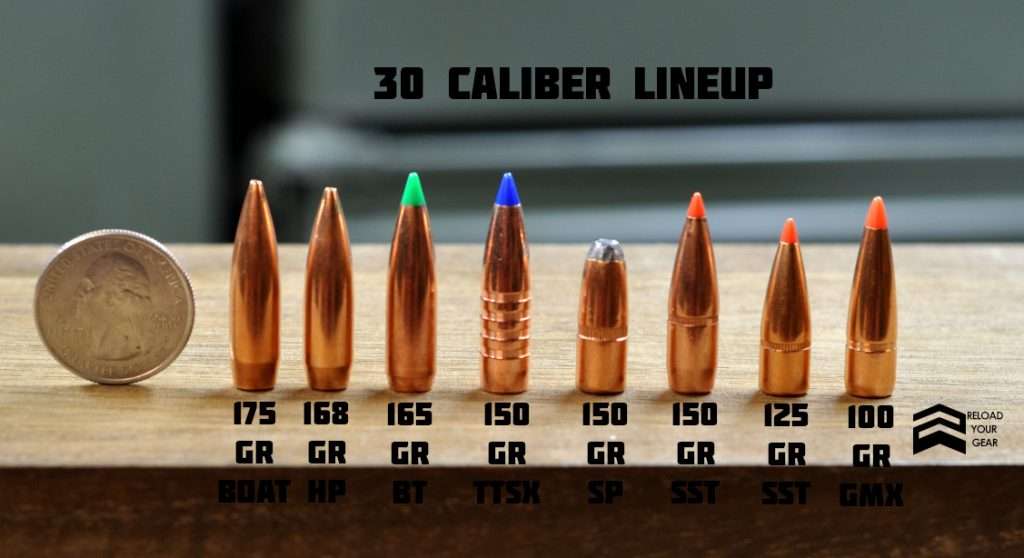
Cartridge Case
A cartridge case is the part of the cartridge that houses primer, propellant, and bullet.
Headspace
Headspace is the distance between the closed chamber’s breech face to the chamber feature to stop deeper cartridge insertion.
Primer
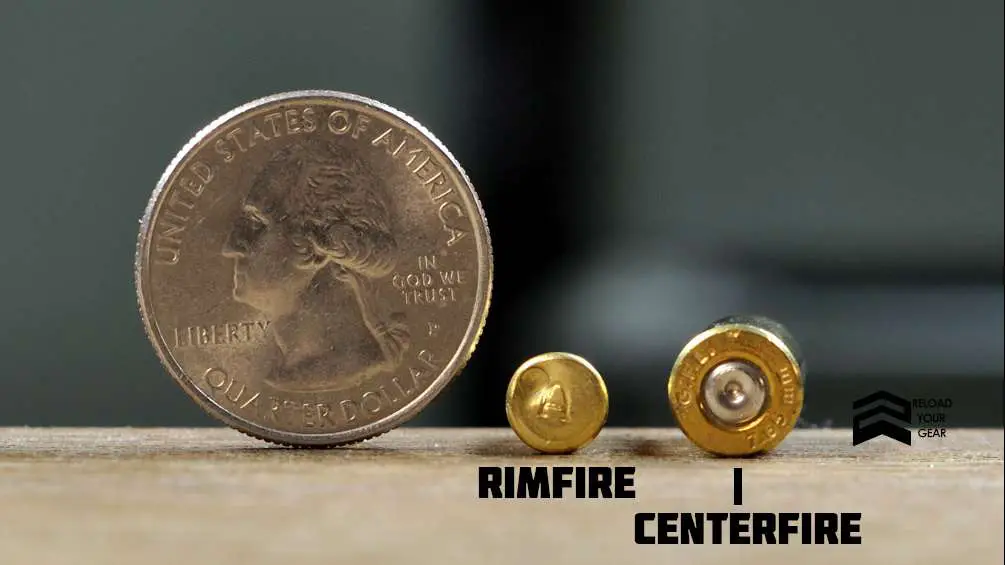
The primer serves as a spark that ignites the propellant to expel the bullet.
Bullet
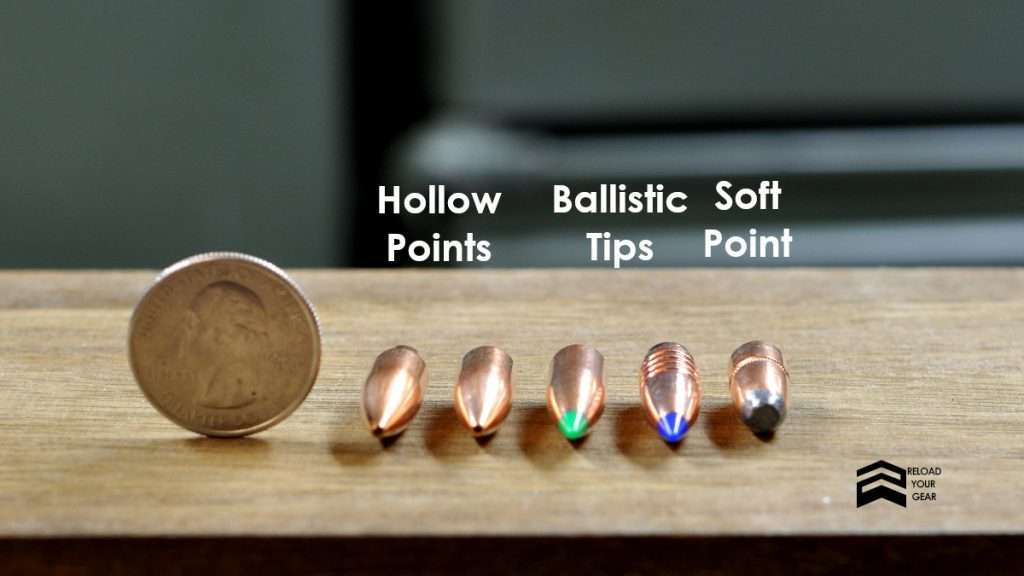
The bullet is the projectile that gets fired out of the gun and into the target.
Powder
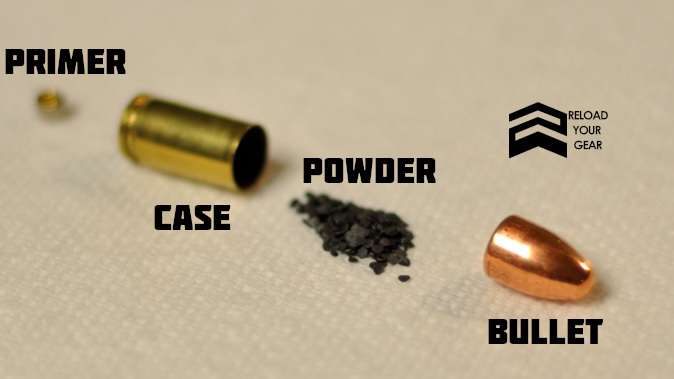
The powder or the propellant or the gunpowder is the explosive part of a cartridge.
Ultimate Rifle Caliber Comparison
Ok, let’s get into the most popular cartridges!
.22 Long Rifle
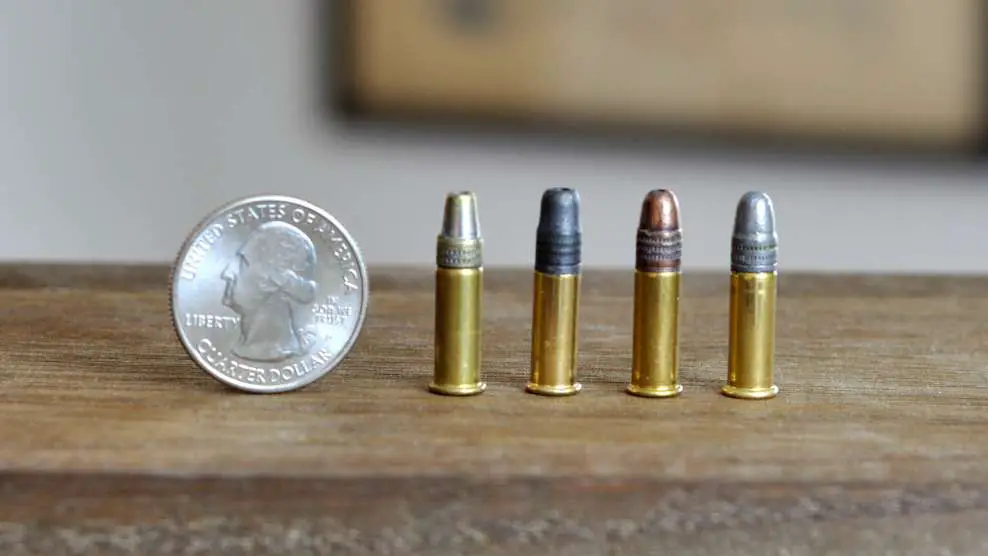
Rimfires are mostly used for hunting small animals such as squirrels but can also be used to hunt medium-sized game like coyotes. With proper placement and experience, they can also knock out large animals like hogs or deer. However, if you want to hunt larger game, we suggest choosing a more powerful round since the .22 LR won’t guarantee a humane kill.
The .22 Long Rifle is commonly used for hunting and target practice. It’s an ideal cartridge for practice shooting because of its light recoil and it’s very efficient at short ranges (up to 150 yards).
Although there have been other 22 cartridges over the years, the 22 LR and 22 Mag have really emerged at the top of the heap and even they have slightly different purposes.
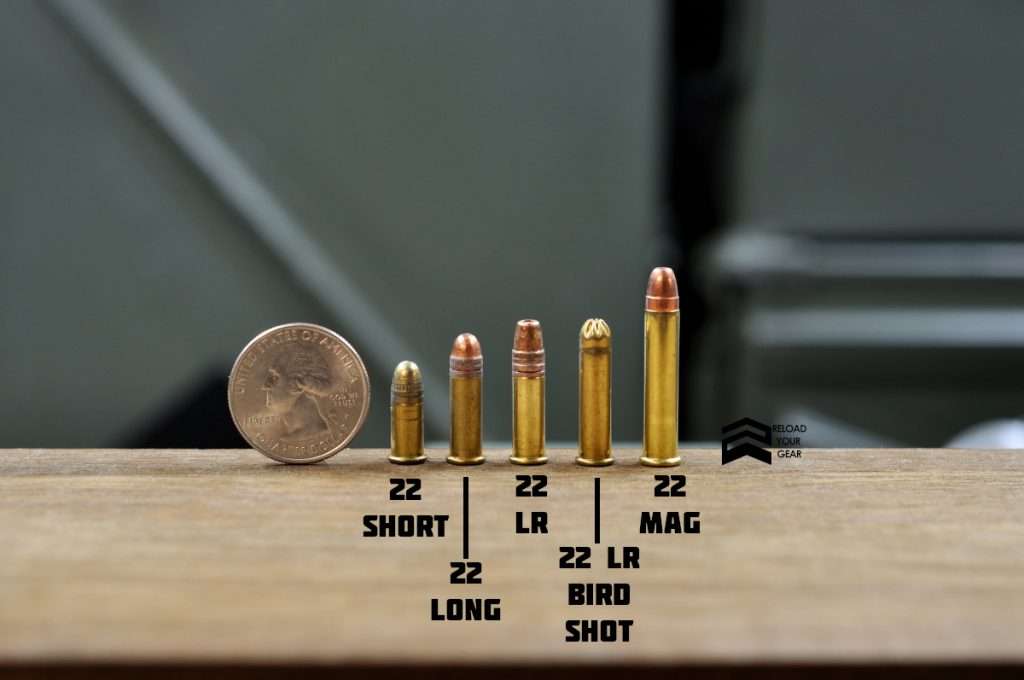
The .22 LR is also an accurate round, but there are other cartridges with better accuracy. Its ballistics also make it really tough for bullet drop compensation past 150 yards and wind is definitely a factor. If you’ll be shooting small game past short-range, you’ll need to either know your drop and estimate range well, re-zero your scope, or dial in your elevation adjustments.
5.45 x 39mm
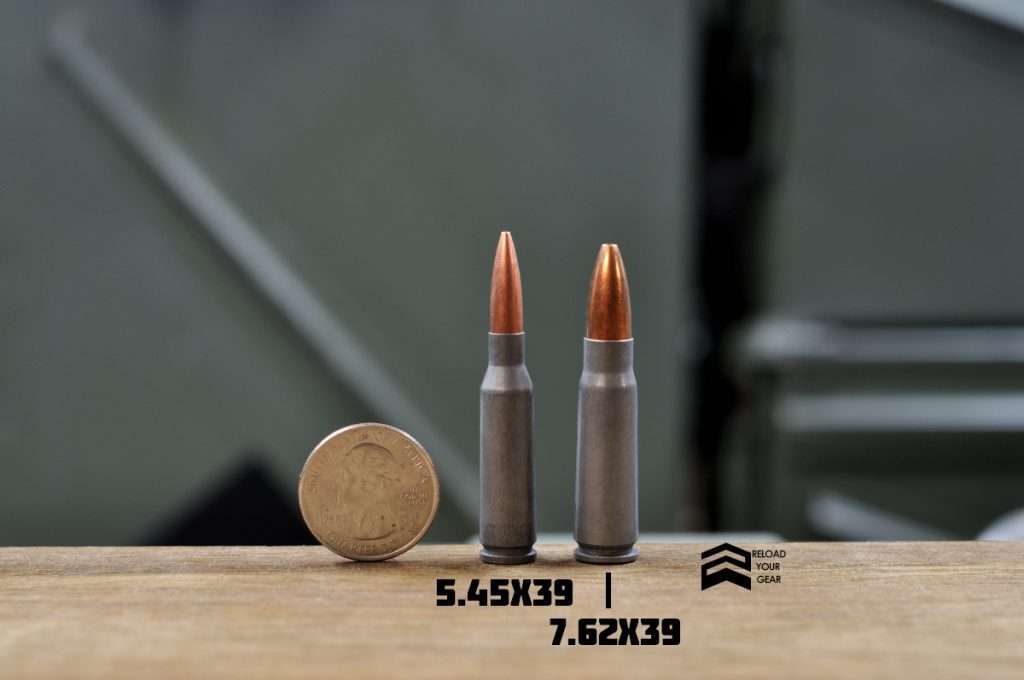
The 5.45 x 39mm is a rimless, small-sized, lightweight military cartridge with high velocity and significant muzzle energy. It was developed in 1974. 5.45x39mm cartridges weigh less and also have less recoil impact compared to 7.62x39mm. They’re also commercially available almost everywhere so affordable finds are easily available online or in surplus shops.
One disadvantage of using 5.45x39mm cartridges is that they leave a lot of lead residue that can build up and cause corrosion. So most shooters who use this ammo always clean up their guns even after firing a few rounds.
.223 Remington
The .223 Remington is a .22-caliber rimless, bottlenecked rifle cartridge that was developed with the goal of producing a small-caliber gun with high velocity. It was created as a military cartridge in 1957 and was introduced later as a commercial round. It’s a very flat-shooting cartridge that’s excellent for varmint hunting in particular.
The .223 Remington gained popularity over the years and is currently used for semi-automatic and manual-action rifles and handguns.
5.56 x 45mm NATO
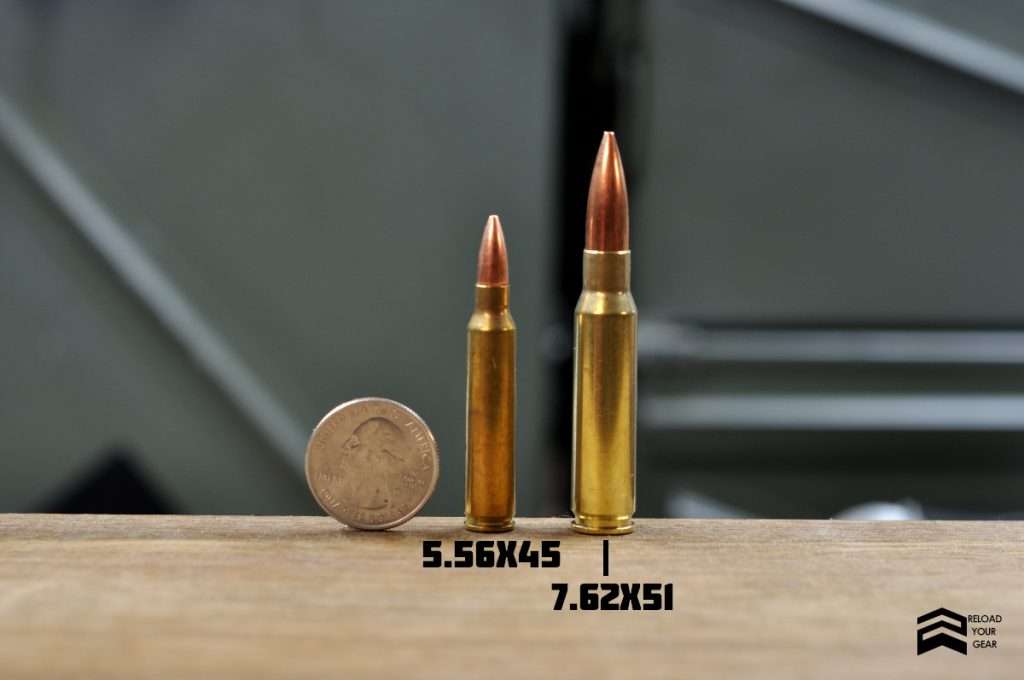
It’s important to know that the .223 Remington and 5.56 NATO are NOT the same cartridge.The 5.56×45 NATO was developed from the .223 Remington. So their cartridge cases’ external dimensions and case capacity are very similar. One thing that separates the 5.56×45 NATO from the .223 Remington is that the former’s brass cases can handle higher chamber pressures because they’re a little thicker. SAAMI lists maximum pressure for the 223 Remington as 55,000 psi vs 5.56 NATO at 60,000 psi. The chamber throat for the 223 Remington is shorter than the 5.56 NATO too.
The round was popularized after the adoption of the AR-15/M-16 and service in the Vietnam War. The availability of cheap, surplus military ammo was a large factor.
Observing safety precautions when hand-loading 5.56×45mm NATO cases is highly advised, as they may generate higher pressures as compared with the .223 Remington cases when loaded with a similar type of bullet and powder. In other words, you can chamber and shoot .223 in 5.56 NATO guns since they’re designed for higher pressures, but don’t shoot 5.56 NATO in a .223 rifle or you may risk damage to your gun and injury to yourself.
.22-250 Remington
The .22-250 Remington is a low-recoil, high-velocity .22 caliber rifle cartridge that’s widely used for long-range smallbore shooting and for hunting small to medium-sized game such as coyotes. It was based on a necked-down 250-3000 case. It can also be used for hunting larger game such as deer, but first check your area’s caliber restrictions on hunting bigger game as the use of cartridges smaller than 6mm is restricted in some States.
In the 1980s, the British Special Air Service and Australian Special Air Service Regiment used sniper rifles chambered in .22-250 for counter-terrorism operations.
.243 Winchester
The .243 Winchester is developed from a necked-down .308 Winchester to 6 mm. It was introduced in 1955. It’s a low-recoil, high-velocity, short action cartridge that’s very reliable when hunting small to medium game. It’s accurate up to 300 yards but is not capable of retaining enough terminal energy to kill medium game at distances beyond that reliably.
It quickly gained popularity for versatility, reliability, and accuracy.
The .243 Win can compete head-to-head with the 6.5mm Creedmoor when it comes to performance. The former also has more edge when it comes to powder capacity, as well as bullet and casing options.
Among small-bore deer hunting cartridges, the .243 Win has the lowest recoil factor. Its recoil factor is twice that of the .22-250 Remington and thrice compared to the .223 Remington, but the .22-250 and .223 aren’t allowed to be used for hunting deer. Although when used for hunting medium game (especially hogs), it’s recommended that 80-gr monolithic copper .243 ammo be used to ensure proper penetration.
Aside from being popular for hunting whitetail and mule deer, the .243 Winchester is also widely used in target and metallic silhouette shooting because of its accuracy, low recoil, and high velocity.
6.5 Creedmoor
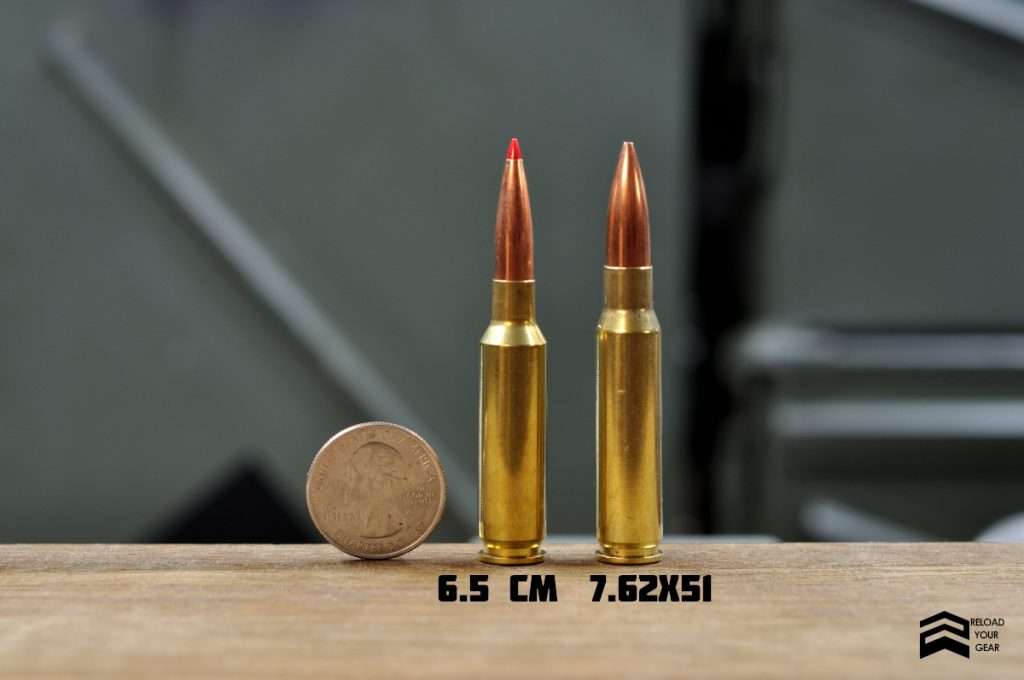
The 6.5 Creedmoor is a relatively new cartridge, introduced in 2008. It’s loosely based on the 308 Winchester. The 6.5 Creedmoor is a medium-powered cartridge that has proven its efficiency in the field hunting medium-sized game as well as long-range competition shooting. It’s also a very cost-effective and low-recoiling round and has even had some military adoption.
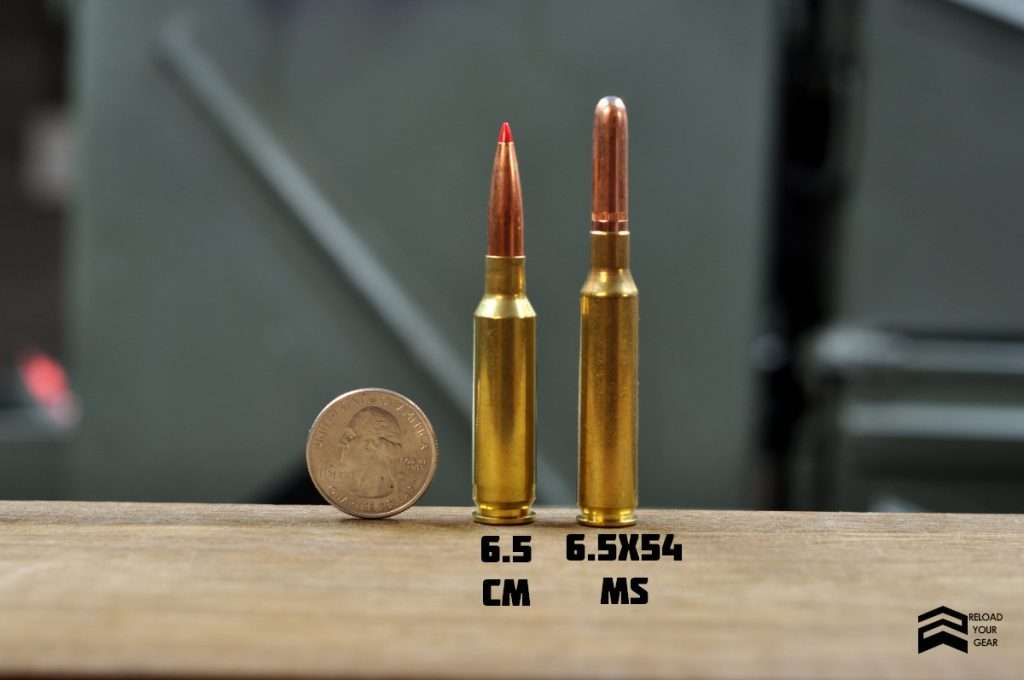
The 6.5 Creedmoor is often compared with the .308 Winchester which is a more powerful round. However, the 6.5 Creedmoor has more edge when it comes to long-range shooting as it can retain more velocity and has less bullet drop at longer ranges. Plus, the 6.5 Creedmoor has lighter recoil compared to the .308 Win.
.270 Winchester
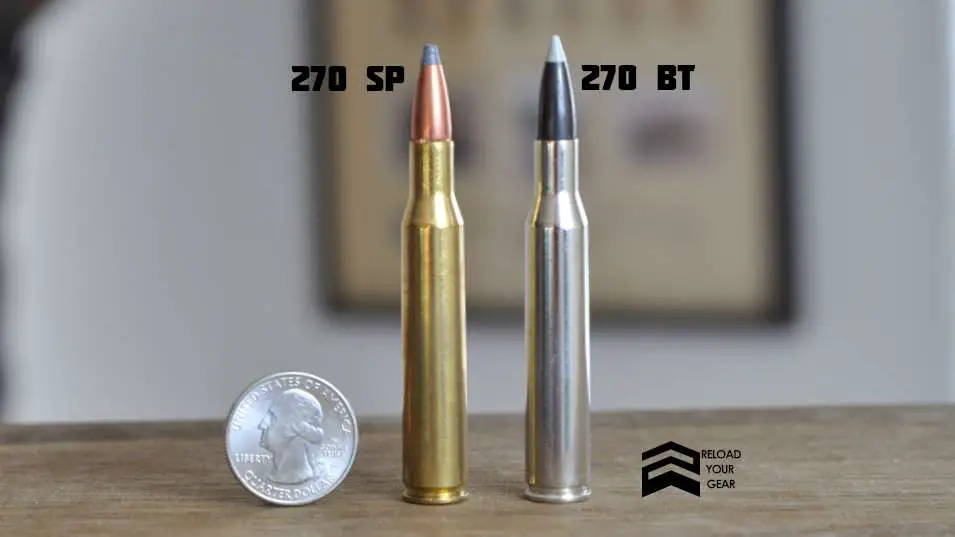
The .270 Winchester is a flat-shooting round that’s best suited for hunting medium to large-sized game (deer, boars, and pigs) in all types of terrain, whether in open plains or in mountains. It’s a necked down 30-06 introduced in 1925 and quickly became one of the most popular big game cartridges in America after its introduction.
A 130-grain loaded in a .270 Win cartridge can retain 1500 ft-lb. of energy up to 400 yards, so you can also easily drop an elk with it.
Compared to the .30-06 Springfield, it has less recoil, a flatter trajectory, and higher velocity because it has a smaller bore diameter and lighter bullets.
7mm-08 Remington
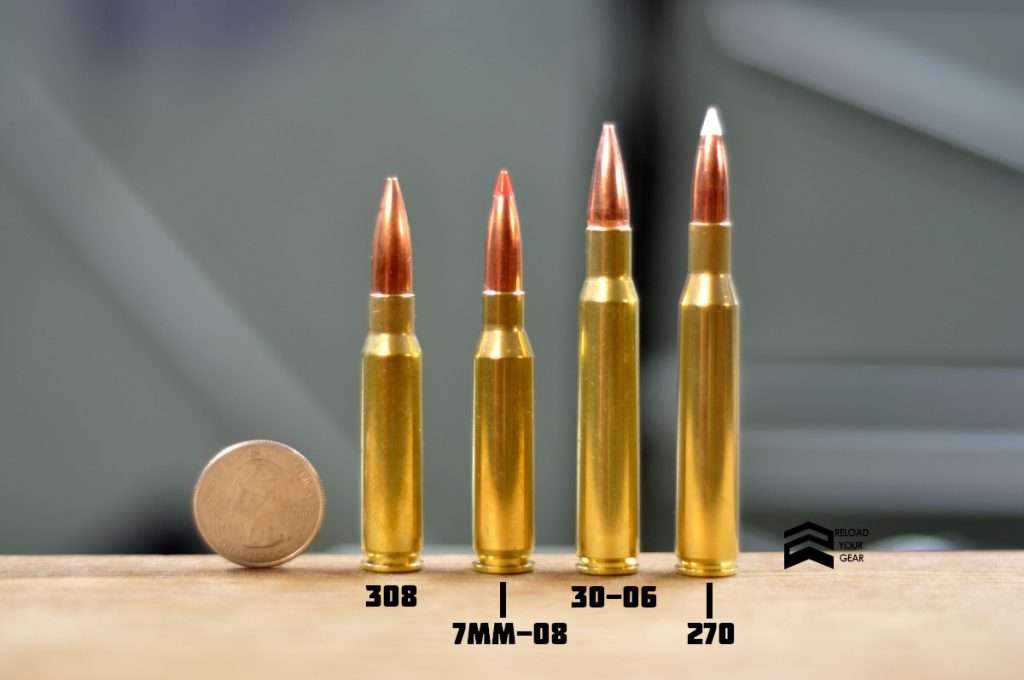
The 7mm-08 is a necked-down .308 Winchester case lengthened slightly to accommodate 7mm caliber bullets. It was introduced in 1980. The 7mm-08 is another popular cartridge next to the .243 Winchester among all the cartridges based on the .308 Win. It’s a very powerful wildcat round with reduced recoil and is great for long-range shooting and hunting medium-sized games such as elk and deer.
.300 Blackout / 300 Whisper
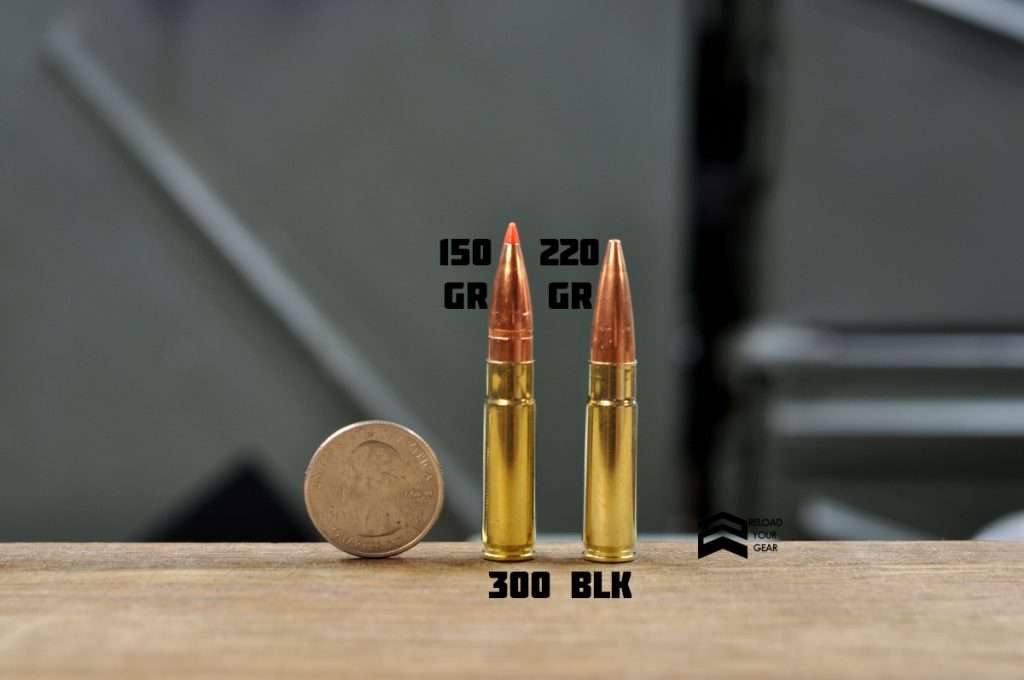
The .300 Blackout was designed to excel in suppressed weapons. But, it’s also a great hunting round for relatively close ranges on anything up to whitetails even though it was originally designed primarily for military applications. It’s also great for self and home defense, as well as target shooting. It can accommodate projectile weights ranging from 110 grains (supersonic) to 220 grains (subsonic).
The only difference between the Blackout and Whisper is the 0.015” longer chamber throat of the 300 AAC Blackout. For most purposes, the two are interchangeable unless you’re a handloader seating bullets very close to the lands.
The 300 AAC Blackout uses standard 5.56mm NATO magazines and components (except the barrel) but the .300 BLK cartridge offers better performance in shorter barrels as compared to 5.56mm NATO. If you want to experience the .300 BLK’s full ballistic potential in a small package, you’d want to shoot it from a 9-inch barrel.
.308 Winchester (& 7.62 x 51 mm / 7.62 NATO)
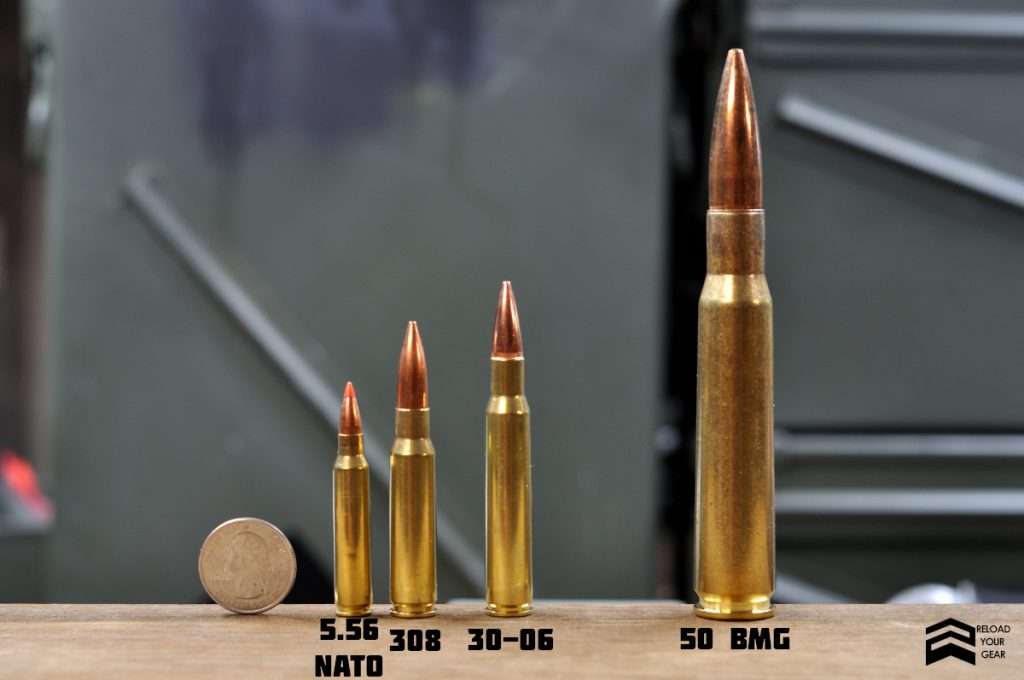
The .308 Winchester is a rimless bottleneck cartridge that has the power to take down medium to large-sized game such as whitetail deer, elk, moose, and bear out to 300 yards. This round is also highly recommended for hunting grizzly, brown, and even polar bears. It is easily one of the most popular cartridges ever made.
In many ways when comparing performance, the 30-06 beats it out. But, the advantage of a medium-sized action with similar performance eventually caught on. The cartridge is very accepting of various powders, giving an acceptable performance with just about anything you throw at it if you’re reloading yourself.
Development of the 7.62 x 51 mm began by the US Army, but Winchester launched the .308 Winchester ahead of the official approval by the US Army. There are pressure differences between the rounds (and comparable case wall thickness differences) and up to 10 mils longer cases.
If you have a .308 Winchester gun, you can use either safely. In general, 7.62 NATO guns will handle 308, but there is a chance the case stretches too far and ruptures. Consult with your manufacturer to be certain you’re good to go.
7.62 x 39 mm (M43)
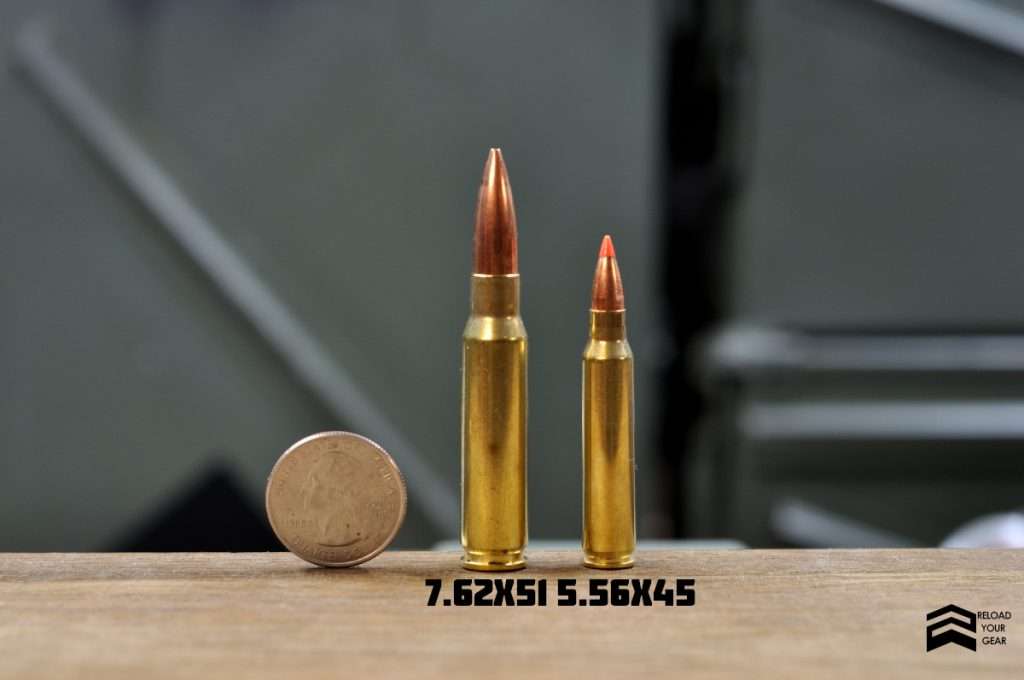
The 7.62 x 39 mm was first used in 1943 by the Russians when battling the Germans as a response to the 8mm Kurz cartridge. It was introduced as an intermediate cartridge in acknowledgement that most combat took place at ranges of several hundred yards or less. With the less powerful cartridge, controlled yet high volume fire downrange was much easier.
The popularity of SKS and AK-47 rifles in Russia and many export markets have insured this is a very popular and easy to get cartridge.
It’s since been used with a necked down case for the 5.45 x 39mm in the AK-74.
7.62 x 54R (7.62mm Russian)
Popularized in the Mosin-Nagant Model 91, the 7.62mm Russian gained popularity in the US after imported weapons began to be sold to the civilian market. That was true even though Remington and Winchester made and sold guns in the caliber due to it’s use as a military cartridge during both world wars.
.30-06 Springfield
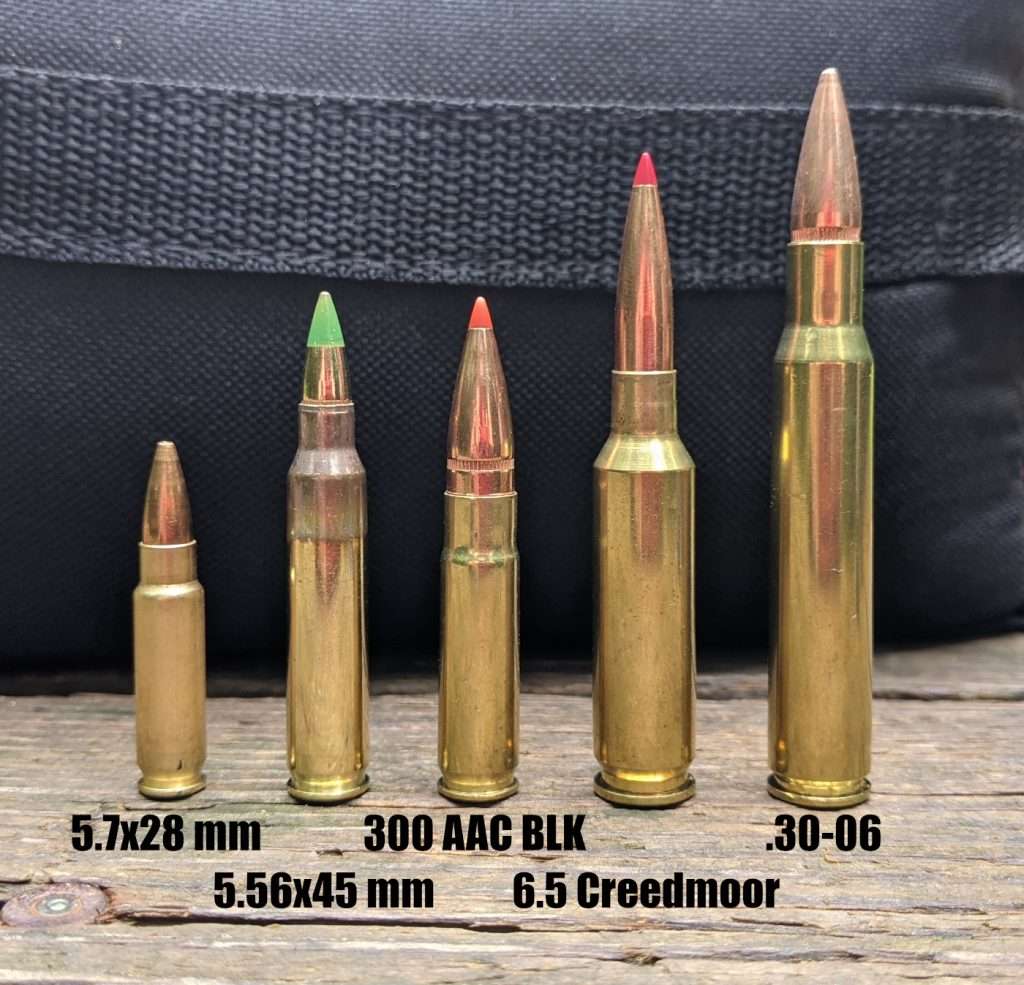
The .30-06 Springfield was developed in 1906 for military use. It was used in both World Wars and Korea. It’s a cartridge with recoil that’s tolerable to most shooters, and the wide range of .30 caliber bullets means it can be loaded for a wide variety of purposes. It’s designed for long-range shooting and has proven its efficiency in combat and all sorts of hunting and shooting applications.
Whether you are a paper target competitor, military match shooter, hunter, or other type of a gun person, the .30-06 is still around and better than ever with its wide variety of bullet weights and easy reloading.
That’s it for our ultimate rifle caliber comparison. If you’re also reloading handgun cartridges, our ultimate handgun caliber and cartridge comparison is a great place to start!
